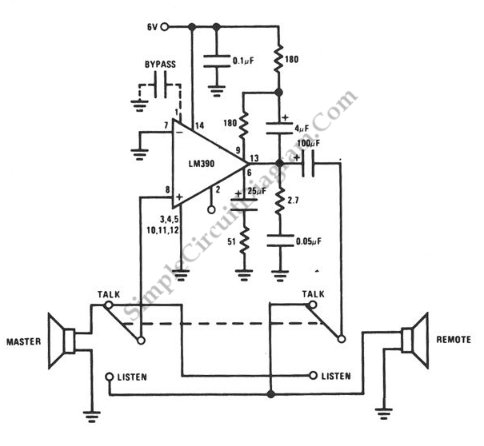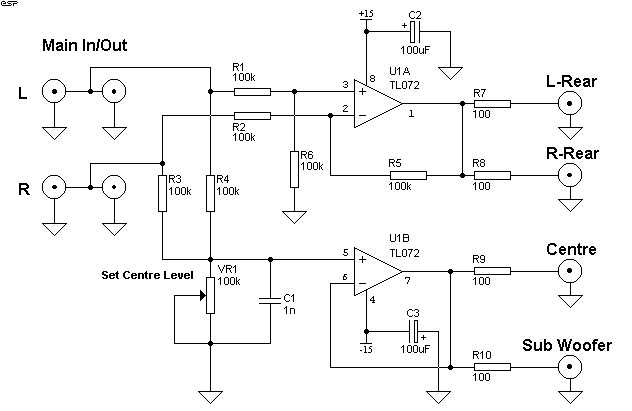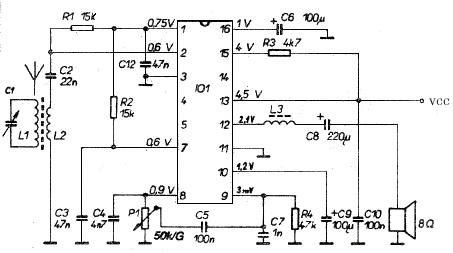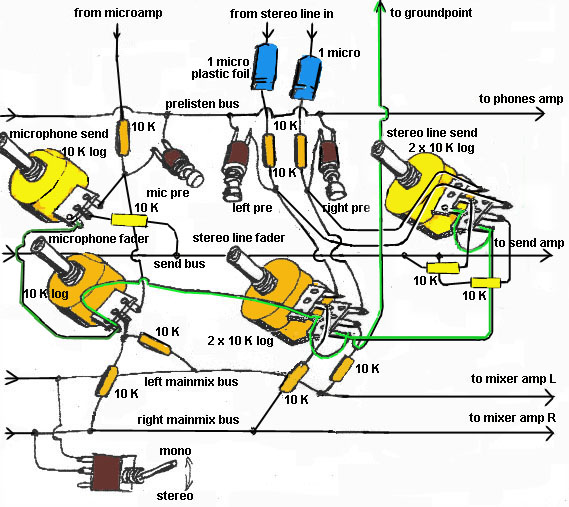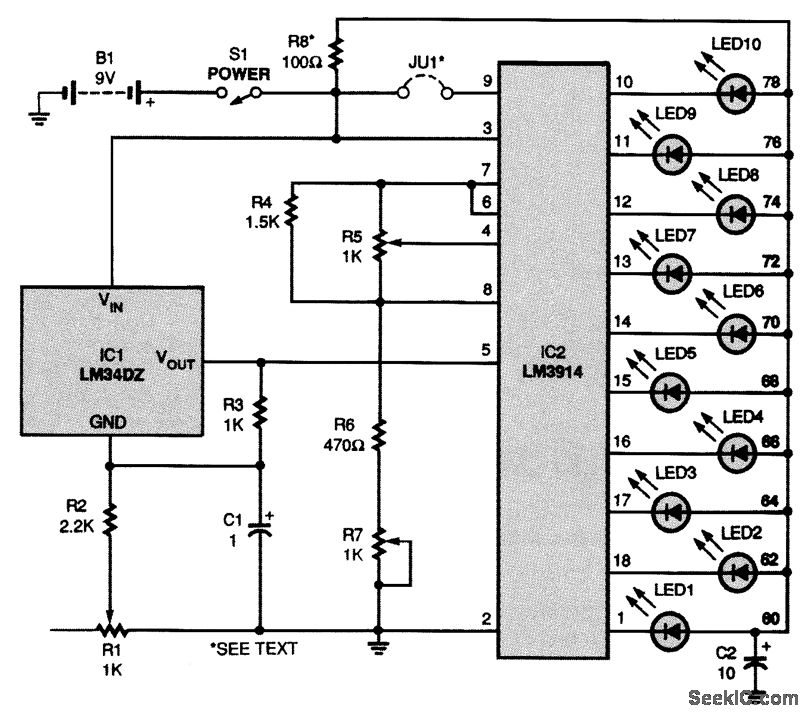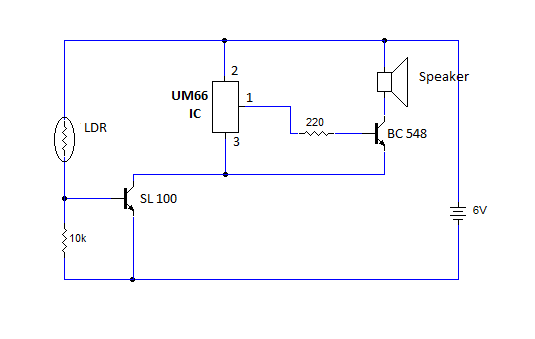
Simple AM Radio Receiver
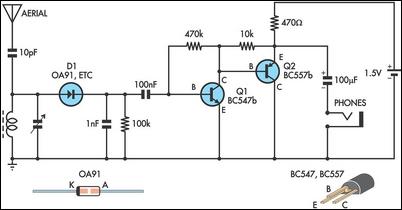
This circuit is essentially an amplified crystal set. The inductor could be a standard AM radio ferrite rod antenna while the tuning capacitor is a variable one.
The described circuit operates as an amplified crystal radio receiver, which utilizes a combination of passive and active components to enhance signal reception. The core component of the circuit is the inductor, which is typically a ferrite rod antenna designed for AM radio frequencies. This inductor serves to capture electromagnetic waves from the surrounding environment, converting them into electrical signals.
The tuning capacitor, which is a variable capacitor, allows the user to adjust the resonant frequency of the circuit. By changing the capacitance, the circuit can be tuned to different AM radio stations, optimizing the reception of desired frequencies while minimizing interference from unwanted signals.
In addition to the inductor and tuning capacitor, the circuit may include a diode for demodulation purposes. The diode rectifies the received radio frequency (RF) signals, allowing the audio components of the signal to be extracted. An audio amplifier may also be integrated into the design to boost the output audio signal to a level suitable for driving headphones or small speakers.
Furthermore, the circuit can be powered by a small battery or a solar cell, making it suitable for portable applications. Overall, this amplified crystal set circuit combines simplicity with effectiveness, providing a practical solution for receiving AM radio signals with enhanced clarity and volume.This circuit is essentially an amplified crystal set. The inductor could be a standard AM radio ferrite rod antenna while the tuning capacitor is a variab.. 🔗 External reference
The described circuit operates as an amplified crystal radio receiver, which utilizes a combination of passive and active components to enhance signal reception. The core component of the circuit is the inductor, which is typically a ferrite rod antenna designed for AM radio frequencies. This inductor serves to capture electromagnetic waves from the surrounding environment, converting them into electrical signals.
The tuning capacitor, which is a variable capacitor, allows the user to adjust the resonant frequency of the circuit. By changing the capacitance, the circuit can be tuned to different AM radio stations, optimizing the reception of desired frequencies while minimizing interference from unwanted signals.
In addition to the inductor and tuning capacitor, the circuit may include a diode for demodulation purposes. The diode rectifies the received radio frequency (RF) signals, allowing the audio components of the signal to be extracted. An audio amplifier may also be integrated into the design to boost the output audio signal to a level suitable for driving headphones or small speakers.
Furthermore, the circuit can be powered by a small battery or a solar cell, making it suitable for portable applications. Overall, this amplified crystal set circuit combines simplicity with effectiveness, providing a practical solution for receiving AM radio signals with enhanced clarity and volume.This circuit is essentially an amplified crystal set. The inductor could be a standard AM radio ferrite rod antenna while the tuning capacitor is a variab.. 🔗 External reference
